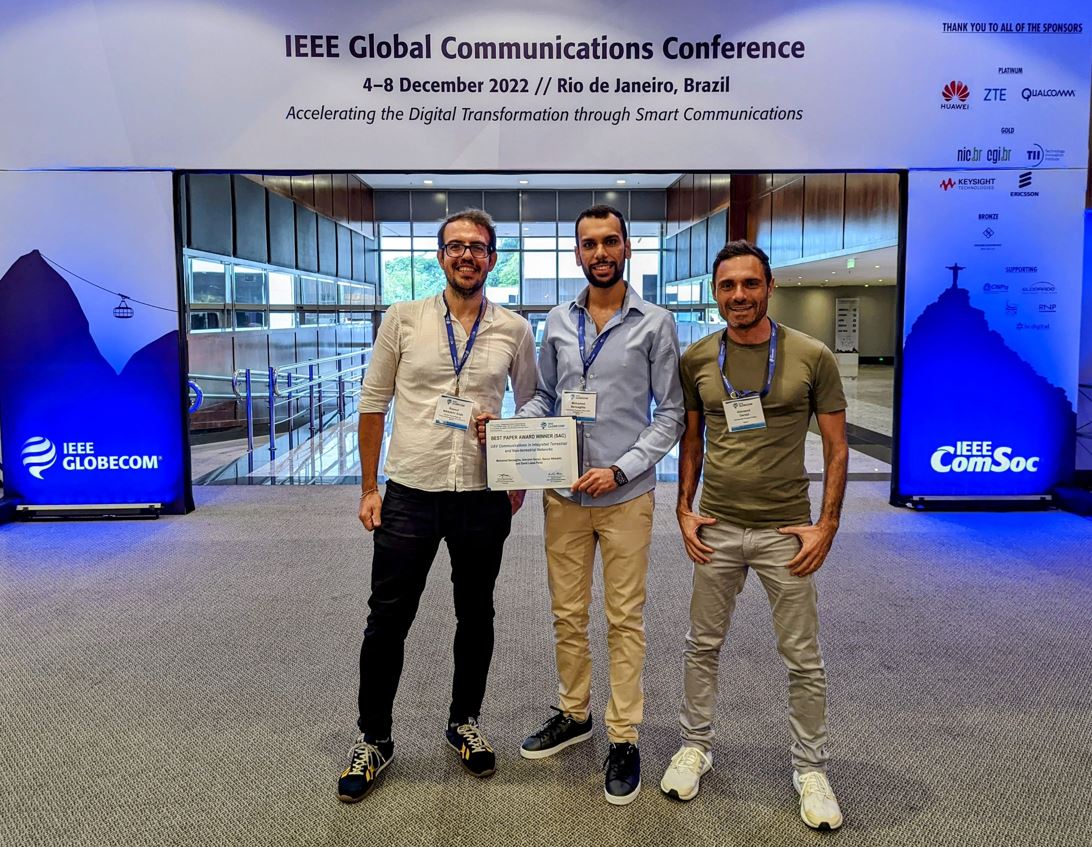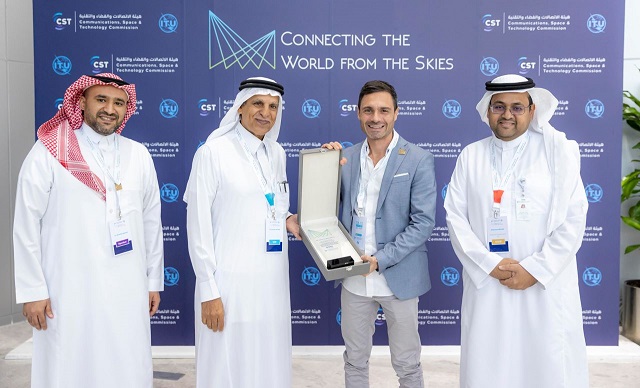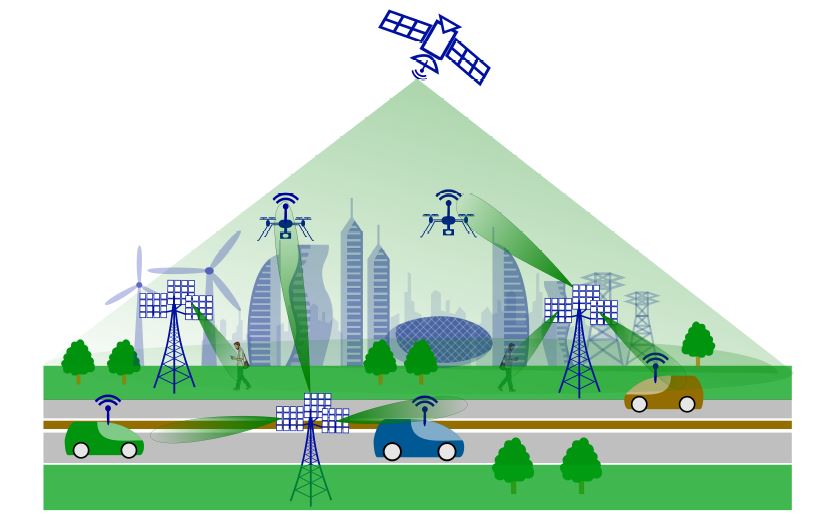Two DTIC researchers, awarded for an article on how to improve the coexistence of drones and mobiles in 6G networks
Two DTIC researchers, awarded for an article on how to improve the coexistence of drones and mobiles in 6G networks
Two DTIC researchers, awarded for an article on how to improve the coexistence of drones and mobiles in 6G networks
In view of the growing use of drones, the award-winning article shows how to improve their coexistence with devices such as mobile phones based on the integration of terrestrial and non-terrestrial networks. The co-authors are Giovanni Geraci and Mohamed Benzaghta of the UPF DTIC.

The researchers Giovanni Geraci and Mohamed Benzaghta, of the UPF Department of Information and Communication Technologies (DTIC), are the co-authors of an article on how to improve the coexistence between drones and terrestrial devices such as mobile phones on 6G networks, recently awarded at two international events. The IEEE, an international organization that promotes technological advances for social progress, has awarded the article within the framework of a forum and a congress held recently in Riyadh (Saudi Arabia) and Rio de Janeiro (Brazil).
The research on which the article is based analyses how to ensure the quality of data transmission from UAVs (unmanned aerial vehicles, better known as drones) and terrestrial devices such as mobile phones, in a scenario in which they must increasingly coexist. The proposed solution involves the integration of terrestrial and non-terrestrial telecommunications networks (TNs and NTNs).
The article is entitled UAV Communications in Integrated Terrestrial and Non-terrestrial Networks and has been drafted by the two researchers of the DTIC at UPF, linked to the Wireless & Secure Communications Research Group (WiSeCom), together with Rasoul Nikbakht (linked to the Centre Tecnològic de Telecomunicacions de Catalunya (CTTC - Telecommunications Technology Centre of Catalonia) located in Barcelona and a PhD at the DTIC) and David López Pérez (Huawei Technologies, Paris). It was published in the digital scientific journal arXiv last August.
Third prize at the IEEE Futures Networks Initiative competition, delivered in Riyadh
Since its publication, the article has received two international awards from the IEEE, the world's largest professional technical organization. On the one hand, it has received third prize in a global competition to promote innovative solutions in the field of non-terrestrial telecommunications beyond 5G and 6G, organized by the IEEE to promote the networks of the future (IEEE Future Networks Initiative) and the Communications, Space and Technology Commission of Saudi Arabia (CST). The prize, endowed with $5,000, was presented in the framework of the Connecting the World from the Skies forum, organized by the International Telecommunication Union (ITU) and the CST between 8 and 10 November. This competition was entered by more than 100 participants from 17 countries and 34 universities and research centres. The forum was attended by representatives of the Saudi Arabian government and executives of large companies in the sector

Recognized with the IEEE Globecom Best Paper Award
On the other hand, more recently, the article received the Best Paper Award at IEEE Globecom, the largest telecommunications congress in the world, held in the Brazilian city of Rio de Janeiro between 4 and 8 December. The article co-authored by the two DTIC researchers was selected from some 2,800 research papers submitted to this contest, 1,100 of which were accepted and only 16 awarded.
A response to reduce interference from drone and terrestrial device signals
The need to ensure enhanced coexistence between UAVs and mobile or other terrestrial devices has increased in recent times, given the increasing use of drones with various functions, linked not only to telecommunications, but also to aerial inspection, photography, precision agriculture, traffic control, search and rescue, and package delivery, among others. In addition, over the next decade, it is planned to launch flying taxis (aerotaxis) via UAV technology.
At present, the coexistence between drones and terrestrial devices continues to present some difficulties. It should be borne in mind that due to the height at which they fly, drones are subject to interference caused by signals from a great number of mobile coverage areas. At the same time, the signals emitted by drones affect the quality of data transmissions from terrestrial devices.
A solution based on the integration of terrestrial and non-terrestrial networks
The research presented in the article proposes solutions to this problem, which go beyond the proposals put forward so far based on 4G and 5G technologies, with little economic feasibility in the short term, since they require the renewal of the current systems of telecommunications networks.

Specifically, the research evaluates the possibility of improving the coexistence of UAVs and devices used by terrestrial telecommunications users from an integrated terrestrial network (TN) -with terrestrial cellular deployment- and non-terrestrial (NTN).
Giovanni Geraci: “LEO satellite constellations are being launched to provide coverage to areas that don’t have any (...). These satellites must orbit continuously and pass regularly over urban areas already connected to the terrestrial network. We plan to exploit the LEO constellations by connecting drones in urban areas and solve these problems of coexistence with terrestrial users”
Non-terrestrial networks consist of a constellation of LEO (low-orbiting) satellites. Regarding NTNs, the researcher Giovanni Geraci states: “LEO satellite constellations are being launched to provide coverage to areas that do not have any, such as developing countries, rural areas... These satellites must orbit continuously - they are not geostationary - and pass regularly over urban areas already connected to the terrestrial network. We plan to exploit LEO constellations by connecting drones in urban areas and solve these problems of coexistence with terrestrial users”.
The scientific article concludes that, in integrated TN and NTN communication networks, UAVs can achieve reliable levels of coverage for data reception and sending, without this being detrimental to the performance of the devices used by terrestrial users.
Drone communications and terrestrial device signal interruptions are reduced almost to zero
The research shows that with the use of the non-terrestrial network, the interruptions suffered by UAVs in the reception and downloading of data reaching them via satellite (through the downstream signal: from satellite to drone) are reduced to almost zero. By contrast, the percentage of interruption stands at 70% when UAVs are solely connected to the terrestrial network. These results have been obtained with UAVs flying at a height of 150 metres.
The use by UAVs of non-terrestrial networks can also contribute to improving the quality of terrestrial device communications. Through this integrated TN-NTN system, interruptions of the upstream signal from terrestrial users can be reduced from 12 to 1%.
Through this integrated network, despite the limitations of its bandwidth (in its spectrum below 6Gz), the minimum UAV command and control speed requirements are achieved, even in an urban area such as Barcelona, with a high rate of use of this type of device. In areas with lower UAV density, and based on the potential implementation of transmission technologies with greater directionality and more aggressive bandwidth reuse, this speed could be improved and provide support for broadband aerial applications.
